The problems with too-short bars
We are no longer building saddle trees, but we have two videos about how Western saddles fit horses available on our westernsaddlefit.com website.
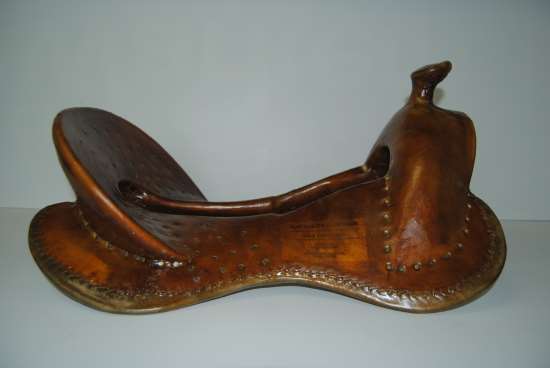
I have written before (more than once actually) about the fact that it is perfectly OK for the loin of the horse to bear weight. This is a fact not even questioned by people who have strictly ridden western since almost every western saddle out there extends onto the loin, and our horses have not been crippled as a result. The idea comes from transposing English "rules" onto Western saddles without understanding the differences in design and how they work. But is there a good reason western trees are built this way? What happens if you shorten the bars so they don't go as far back? Well, there are two main problems that occur when you try to shorten the bars excessively.
Surface Area
This is Principle #3 in our Three Principles of Saddle Fit - distribute the Pressure over as much surface area as possible. The weight on the top of the horse (rider plus saddle) is divided by the amount of surface area in contact with the horse to give pressure ie. pounds per square inch in the Imperial system. (Yeah, I realize that not every part of the tree will have the same amount of pressure on it, but hey, we're imagining an ideal situation here.) So when you shorten the bars, you automatically increase the pressure under any one area. The shorter the bars, the higher the pressure under the surface area that remains. (The same situation occurs with the idea that only the middle section of the bar should contact the horse with a few inches at each end being present to build the saddle but not bear weight.)
So by shortening the bars, you run a higher chance of creating pressure damage on your horse if everything isn't close to ideal, especially with heavier riders, simply due to the decreased surface area.
Uneven distribution of pressure
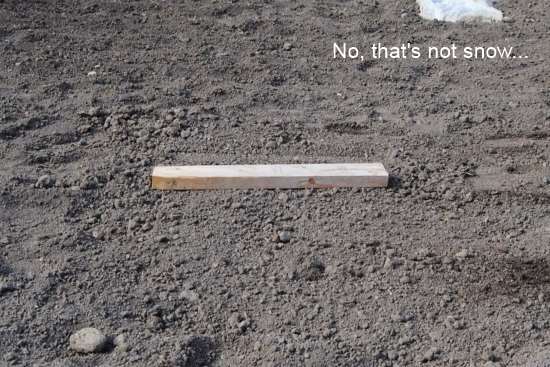
Since the bar is a rigid object, it will distribute the pressure placed on the top of it over a much larger surface area under it. This is the whole point of having a tree in a saddle. The ideal is to have an even distribution of pressure all along the bar. (We're ignoring the important idea of edges at the moment, but in our imaginary ideal situation they won't be a problem, right?)
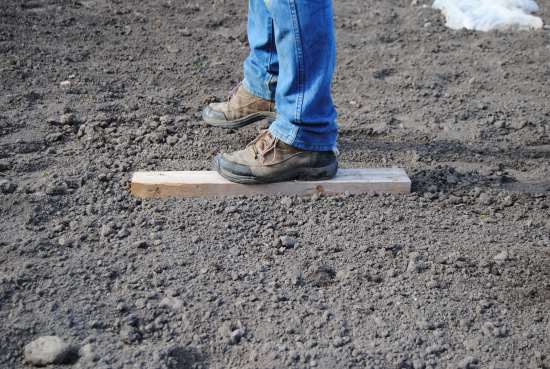
The best way to get that even distribution of pressure is to have the weight centered over the bar. Then it will press evenly into the softer underlying surface - either a horse's back or the dirt of the garden, whichever you happen to be observing at the moment.
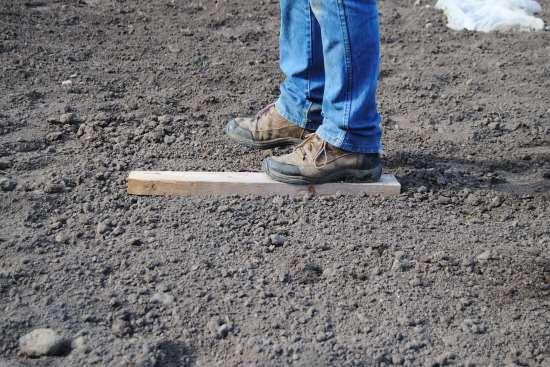
If you put the pressure closer to one end of the bar - or board - guess what? It pushes that end down harder while lightening up the pressure at the other end. (Thanks go out to Vanna-Rod for his expert modelling services.)
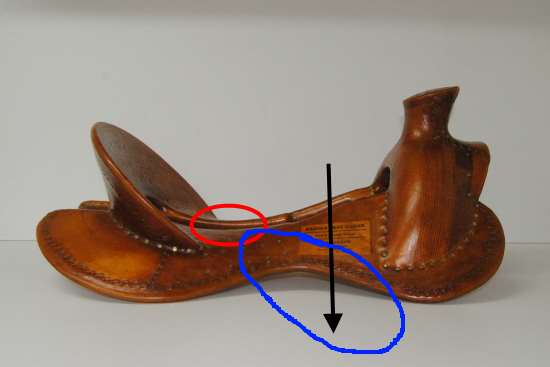
So how does this apply to saddles? A Western tree is designed to have weight bearing areas both ahead of and behind the rider. The rider's body weight is taken up in three ways - on his seat/pin bones and surrounding tissue on the seat of the saddle, on the muscles of his inner thighs, and in the stirrups. In the picture above, the red circle shows where the seat takes the load. (Maybe the circle should have been bigger, but you get the point.) The black arrow shows the position of the pressure on the stirrups, and the blue circle approximates where the inner thighs support weight. You can see that the center of pressure is going to be somewhat ahead of the low point of the seat where the pin bones will end up (because gravity always works), which means it will be somewhere close to the center of the bars. (We later showed this to be true with our pressure pad.) So with the weight in the center of the bar, the pressure is evenly distributed over the bar.
Of course, we understand that the percentage of weight each of these three take is dependent on how the rider sits and rides and that it varies by the microsecond. We also understand that where these areas really are relative to the center of the bar depends on the shape of the seat the saddle maker puts in - where he puts the low point and the shape he builds in for the rider's thighs. And we understand that the length of the seat also affects things. And, and, and... But again, let's remember that we are imagining an ideal situation here...
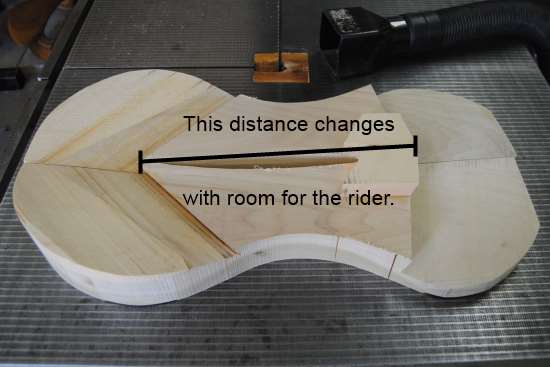
Note: On our trees, and most true hand made trees, the distance forward of the fork cut and behind the cantle cut are consistent and the area between them changes with room for the rider. On production trees, there is generally one or two standard bar lengths and the cantle is moved forward or back on the bars to make the correct seat length so for longer seats, the cantle gets close to the back of the bars.
So what happens when our customers want shorter bars, for whatever reason? Well, we have a number of tricks up our sleeve to try and keep the rider in the center of the bar while still giving them enough room, but sooner or later the tricks run out and the only way is to decrease the amount of bar behind the cantle. The result is the equivalent of standing close to the end of a board - the back part of the bars have higher pressure under them and the back bar tips are more likely to Poke - dig into the horse.
So by shortening the bars, you run a higher chance of creating pressure damage on your horse, especially with heavier riders, due to a disproportionate amount of pressure toward the back of the bars.
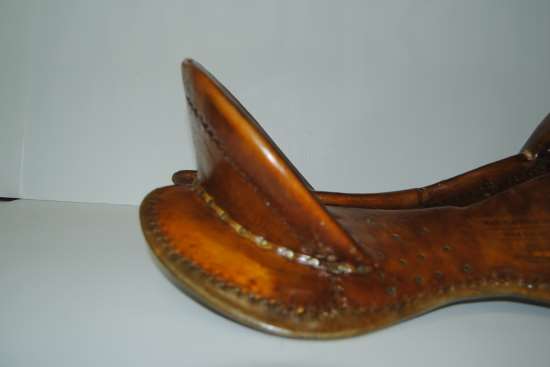
A while back, one of our customers was very insistent on extra short bars and, against our better judgement, we agreed to try it out. Even with all the tricks we could use, this was the result. Rod put in a bit of extra rock as well as extra bar tip relief at the back end of the bars to try to alleviate the possible problems caused by so little bar behind the cantle, but the comment of the customer was that although it was working OK, it could still use a bit more rock at the back end. He couldn't understand that what it could really have used was more bar at the back end to center the weight and relieve the uneven distribution of pressure. Lesson learned for us anyway...
So how short is too short?
We have arbitrarily selected 22" as our minimum bar length. There is no magic in this number and it is not set in stone anywhere, including our shop. But it makes sense to us that this is a reasonable length. Why? A.) because it still has decent surface area and B.) because it is short enough to still fit horses with a short shoulder to hip measurement (which gives us a good indication of practical back length). For kids' trees or lighter weight riders on really short backed horses, we will decrease it. But for people just wanting to reduce the weight of the saddle, we try to explain that as far as the horse is concerned, he is far more comfortable with a little more weight and lower pressure on any one point than with a little less weight and higher pressure areas.
Conclusion
Surface area is good. Rider's weight centered over the bar is good. Bar behind the rider is needed to do this, so it is good too, even though it means the bars can't be too short. And ideal situations are good - but are generally imaginary...
